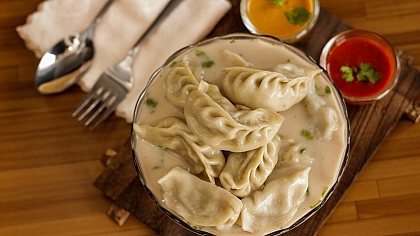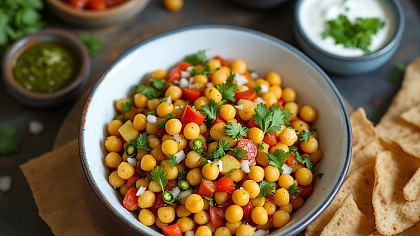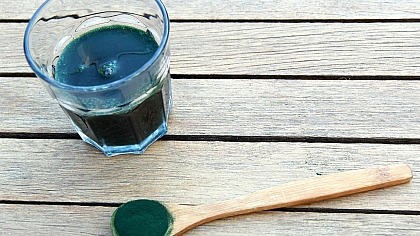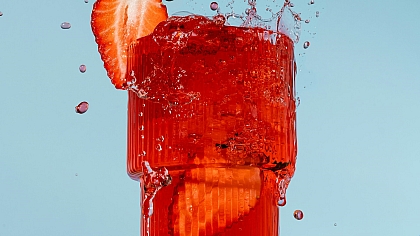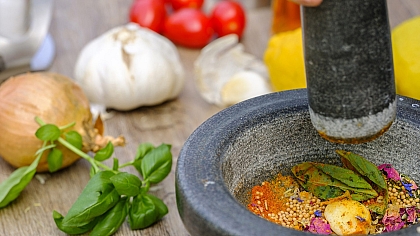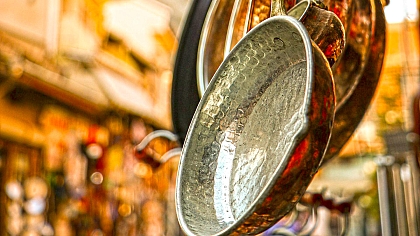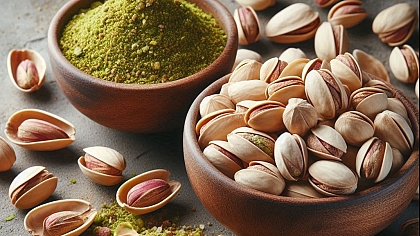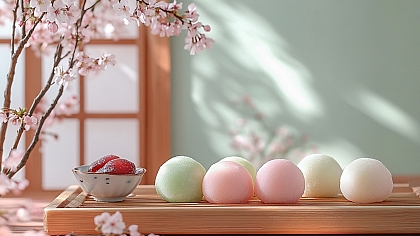
Different Types of Salt: Uses, Benefits & How to Choose the Best One
Salt, often referred to as the essence of flavour, is a fundamental ingredient in kitchens around the world. This ubiquitous mineral is not just a simple seasoning but a critical component that elevates and enhances the taste of food. From preserving foods in ancient times to playing a central role in the culinary traditions of countless cultures, salt's significance cannot be overstated.
Whether it's the subtle complexity of sea salt or the bold presence of black salt, understanding the different types of salt and their unique properties can significantly impact your culinary creations.
Salt's ability to draw out flavours, tenderize meats and preserve perishables makes it an indispensable tool for chefs and home cooks alike. However, not all salts are created equal. Each type of salt has distinct characteristics, from texture and flavour to mineral content and culinary applications. This guide delves into the world of salt, exploring its varieties and uses to help you make informed choices in your cooking endeavours.
Understanding Salt

Definition and Composition
Salt, chemically known as sodium chloride (NaCl), is a mineral essential for human life. It is composed of two elements: sodium (Na) and chlorine (Cl). These elements are not only crucial for maintaining the body's electrolyte balance but also play a vital role in various physiological processes, including nerve transmission and muscle function.
Historical Significance
Salt's importance dates back thousands of years. It was a precious commodity, often traded and even used as currency in some cultures. The word "salary" is derived from the Latin word "salarium," which refers to the payments made to Roman soldiers for the purchase of salt. Salt has also played a crucial role in food preservation, especially before the advent of modern refrigeration, allowing civilizations to store food for longer periods.
Common Types of Salt
Table Salt
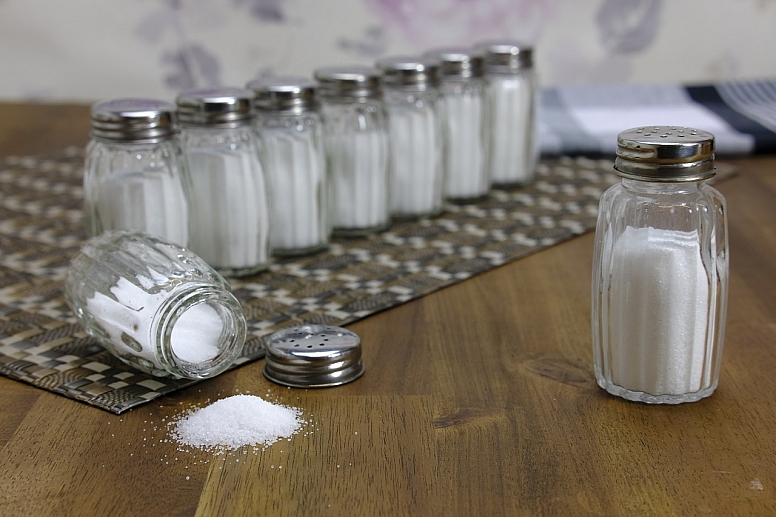
Table salt is the most commonly used salt in households. It is highly refined, meaning that it has been stripped of its natural minerals. The fine, consistent granules of table salt are ideal for baking, where precise measurements are crucial. Most table salt is iodized, which means iodine has been added to prevent iodine deficiency, a common health issue in many parts of the world.
Table salt is the go-to salt for everyday cooking and baking. Its fine granules dissolve quickly, making it ideal for seasoning dishes during the cooking process and for baking recipes where precise measurements are critical.
Culinary Uses:
- Baking: Essential for controlling the fermentation of yeast and enhancing the flavour of baked goods.
- Cooking: Used for general seasoning during cooking due to its consistent texture and flavour.
- Pickling: Commonly used in brine solutions for pickling vegetables due to its purity and fine texture.
Kosher Salt
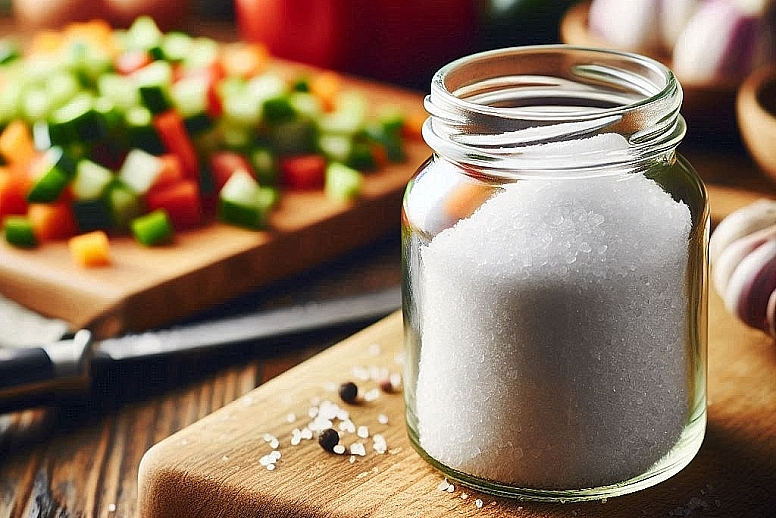
Kosher salt, named for its role in the Jewish dietary law of koshering meats, is known for its large, flaky crystals. It is less refined than table salt and usually does not contain additives like iodine. Kosher salt dissolves quickly and is preferred by many chefs for its ability to provide a burst of salty flavour without overwhelming the dish. Its coarse texture also makes it ideal for seasoning meats and vegetables, as it clings well to surfaces.
Kosher salt's large, flaky crystals make it a favourite among chefs for its ease of use and ability to evenly distribute saltiness.
Culinary Uses:
- Seasoning: Ideal for seasoning meat before grilling or roasting as it clings well to the surface and dissolves slowly.
- Cooking: Excellent for boiling water for pasta or blanching vegetables, where the large crystals provide even seasoning.
- Baking: Sometimes used in baking recipes, although less frequently than table salt due to its larger grain size.
Specialty Salts
Pink Himalayan Salt

Pink Himalayan salt, sourced from the ancient sea beds of the Himalayas, is known for its striking pink hue and rich mineral content. The pink colour comes from trace amounts of iron oxide (rust), and it contains over 80 minerals and elements, including potassium, magnesium, and calcium. This salt is typically less processed than table salt, often available in large crystals or blocks, and is prized for its mild flavour and vibrant colour.
Uses:
- Cooking: Suitable for seasoning dishes during cooking, particularly when a milder flavour is desired. Its subtle flavour and variety of grain sizes make it versatile for both cooking and finishing.
- Finishing: Often used as a finishing salt to add a touch of elegance and a delicate crunch to dishes. Pink Himalayan salt is prized for its mineral content and aesthetic appeal.
- Presentation: Blocks of pink Himalayan salt can be used as serving platters, adding a mild saltiness to the food served on them.
Black Salt (Kala Namak)
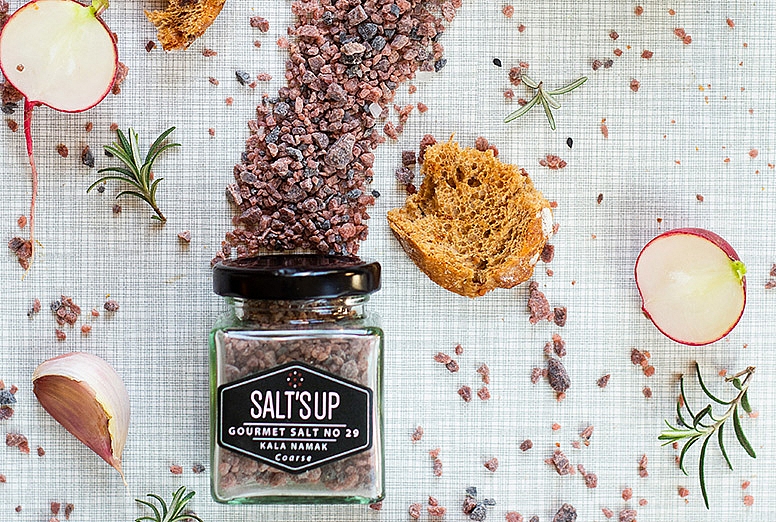
Black salt, or Kala Namak, is a rock salt commonly used in South Asian cuisine. Despite its name, it typically appears pinkish-brown due to its sulfur content. The sulfur compounds give it a distinctive, pungent smell and taste, often compared to boiled eggs.
Uses:
- Seasoning: Integral to many Indian dishes, especially street foods like chaats, chutneys, and raitas where its pungent flavour adds depth.
- Vegan Cooking: Used to mimic the taste of eggs in vegan dishes, such as tofu scrambles and vegan egg salads.
- Beverages: Sometimes added to drinks like Indian lemonade (nimbu pani) for a savoury twist.
Sea Salt
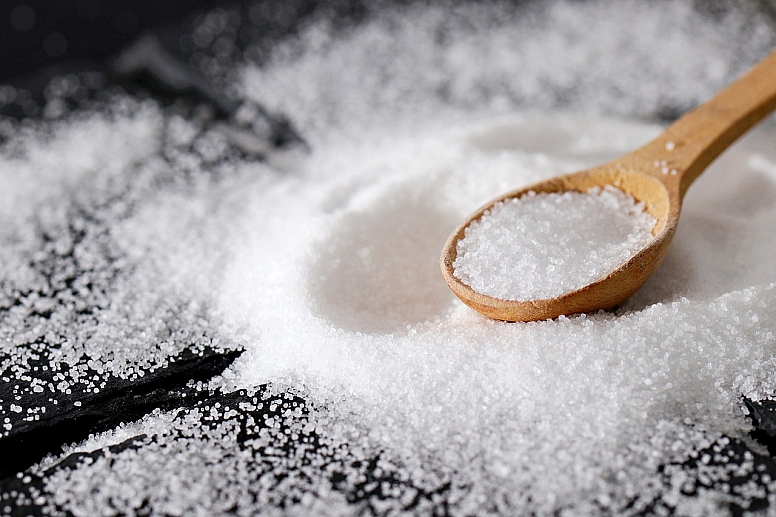
Sea salt is produced through the evaporation of seawater. It is generally less refined than table salt and retains trace minerals that can affect its colour and flavour. Depending on the source, sea salt can range from fine grains to large crystals and may have different shades like grey or white. Sea salt's varied texture and mineral content make it a versatile option for both cooking and finishing.
Uses:
- Cooking: Used during cooking for a clean, straightforward saltiness. Ideal for boiling and seasoning pasta, vegetables, and soups.
- Baking: Often used to enhance the flavour of baked goods, providing a contrast to sweet flavours.
- Garnishing: The varied texture can add a crunchy finish to salads, baked goods, and grilled meats.
Fleur de Sel
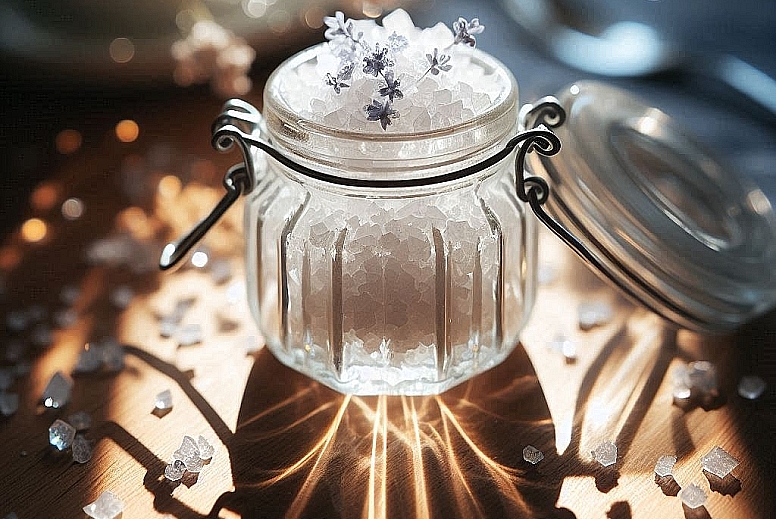
Fleur de Sel, translating to "flower of salt," is a delicate, flaky sea salt harvested by hand from the surface of salt ponds in certain regions of France. It is considered one of the finest finishing salts due to its complex flavour and moist texture.
Uses:
- Gourmet Foods: Commonly used in gourmet chocolates, caramels, and pastries for a balance of sweet and salty.
- Finishing: Best used as a finishing salt to enhance the flavour of dishes without overpowering them. Ideal for salads, grilled meats, and seafood.
Celtic Sea Salt
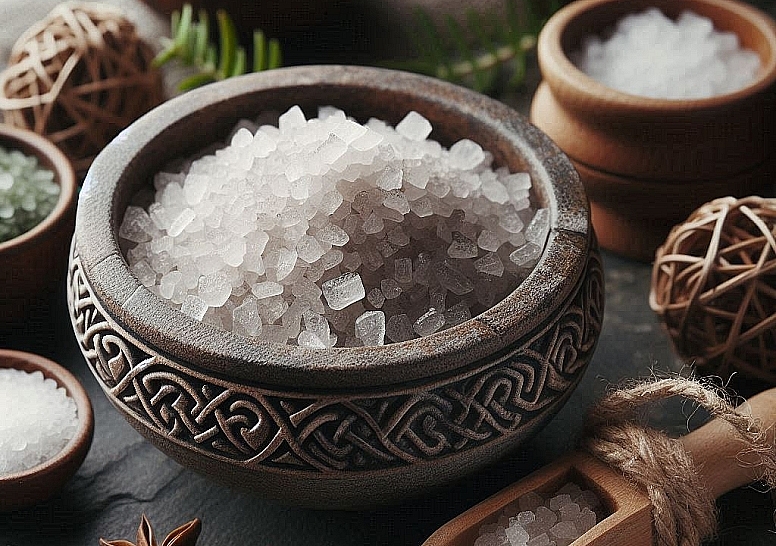
Celtic sea salt is harvested from the coastal areas of France using traditional methods. It is known for its grey colour, which comes from the clay found in the salt flats. This salt is unrefined and retains a high moisture content, along with a variety of minerals.
Uses:
- Cooking: Suitable for general seasoning in cooking, particularly for dishes that benefit from its mineral complexity.
Red Hawaiian Salt (Alaea Salt)
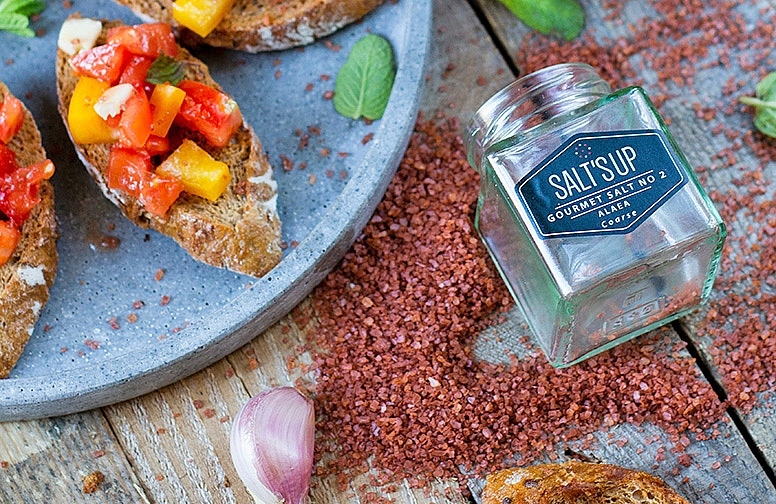
Red Hawaiian salt, also known as Alaea salt, gets its distinctive red colour from the addition of volcanic clay called alaea. This salt is rich in iron oxide and other minerals, giving it a unique flavour. Red Hawaiian salt's distinctive colour and flavour make it a notable ingredient in traditional Hawaiian cuisine.
Uses:
- Traditional Dishes: Essential for traditional Hawaiian dishes like poke and kalua pig, where its mineral content and flavour enhance the overall taste.
- Finishing: Can be used as a finishing salt to add colour and flavour to various dishes, including grilled meats and salads.
Smoked Salt
Smoked salt is created by smoking salt over a wood fire, infusing it with a rich, smoky flavour. The type of wood used can impart different smoky nuances to the salt.
Uses:
- Seasoning: Perfect for seasoning meats, vegetables, and even drinks, adding a depth of flavour. Ideal for adding a smoky flavour to dishes without using actual smoke, such as in vegetarian and vegan dishes, soups, stews, and sauces.
- Finishing: Adds a smoky finish to grilled or roasted dishes when sprinkled on just before serving.
-
Non-Culinary Uses of Different Types of Salt

Salt's versatility extends far beyond simply seasoning food. Each type of salt has its unique properties that make it suitable for specific culinary and non-culinary applications. Understanding these uses can help you make the most out of your salt selection in the kitchen and beyond.
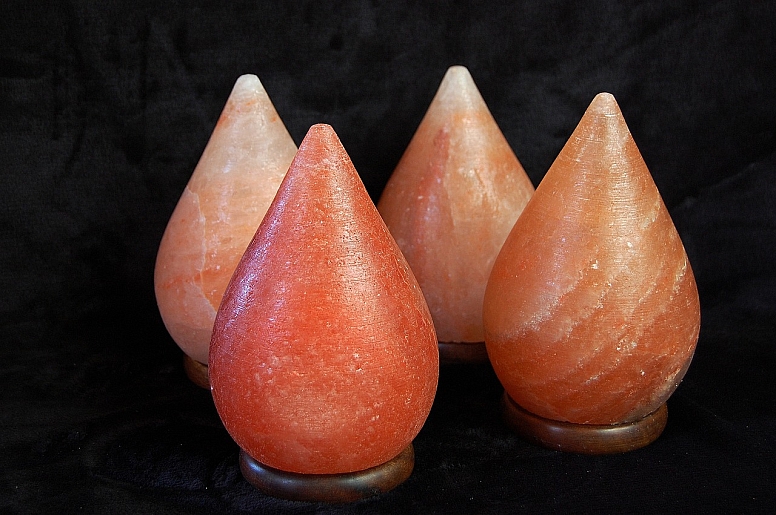
Pink Himalayan Salt
- Salt Lamps: Believed to purify the air and promote relaxation when used in salt lamps.
- Bath Salts: Used in bath salts for their purported detoxifying and soothing properties.
Black Salt (Kala Namak)
- Ayurvedic Medicine: Traditionally used in Ayurvedic practices for its digestive benefits.
Sea Salt
- Bath Products: Commonly used in bath salts and scrubs for their mineral content and exfoliating properties.
Celtic Sea Salt
- Health & Wellness: Sometimes used in health-focused recipes and wellness drinks due to its purported benefits from trace minerals. It is often recommended by health enthusiasts.
Red Hawaiian Salt (Alaea Salt)
- Cultural Rituals: Historically used in Hawaiian purification rituals and ceremonies.
Health Implications of Salt Consumption
Sodium Content and Dietary Guidelines
Salt is essential for life, but it must be consumed in moderation. The sodium in salt is necessary for maintaining fluid balance, nerve function, and muscle contraction. However, excessive sodium intake is linked to various health issues, including hypertension and cardiovascular diseases.
Guidelines:
- Daily Intake: Health authorities generally recommend limiting sodium intake to less than 2,300 milligrams per day, with an ideal limit of 1,500 milligrams for most adults.
- Monitoring: It's important to be mindful of sodium levels in processed foods, which can contribute significantly to overall intake.
Benefits and Risks
Benefits:
- Essential Functions: Sodium is vital for maintaining blood pressure, fluid balance, and proper nerve and muscle function.
- Flavour Enhancement: Enhances the taste of food and can improve appetite and enjoyment of meals.
Risks:
- Hypertension: High sodium intake is a major risk factor for hypertension, which can lead to heart disease and stroke.
- Kidney Disease: Excessive sodium can strain the kidneys and contribute to the development of kidney disease.
- Bone Health: High sodium intake may lead to calcium loss through urine, potentially affecting bone health.
How to Choose the Right Salt: Factors to Consider
- Flavour: Choose a salt that complements the flavour profile of your dish. For example, smoked salt adds a unique depth to grilled foods, while Fleur de Sel enhances the delicate flavours of fine cuisine.
- Texture: Consider the texture you need. Finishing salts like Fleur de Sel and sea salt add a pleasant crunch, while fine salts like table salt dissolve quickly and evenly.
- Mineral Content: Some salts, like Himalayan and Celtic sea salt, contain trace minerals that can add subtle flavours and nutritional benefits.
Tips for Storage and Usage
- Storage: Store salt in an airtight container in a cool, dry place to prevent clumping and maintain its quality.
- Usage: Use speciality salts sparingly as finishing touches to appreciate their unique flavours and textures. Regular salts like table and kosher salt can be used more liberally in cooking.
Salt is more than just a seasoning; it's a crucial element that can elevate your culinary creations. By understanding the different types of salt and their unique properties, you can make informed choices that enhance the flavour, texture, and presentation of your dishes. Whether you're a home cook or a professional chef, experimenting with various salts can open up new dimensions in your cooking, bringing out the best in your ingredients and adding a touch of sophistication to your meals.
FAQs: Which Salt is Better for You?
1. Is sea salt healthier than table salt?
Sea salt and table salt have similar sodium content by weight, so neither is inherently healthier in terms of sodium levels. However, sea salt is less processed and retains trace minerals such as magnesium, calcium, and potassium, which can offer slight nutritional benefits. Table salt often contains added iodine, which is important for thyroid health, but is otherwise stripped of these additional minerals.
2. What are the benefits of Himalayan pink salt?
Himalayan pink salt contains over 80 trace minerals, including potassium, magnesium, and calcium, which can contribute to its distinctive flavour and potential health benefits. These minerals are present in small amounts, so while they contribute to its appeal, they don't provide significant health benefits over other types of salt. The aesthetic appeal and mild flavour make it popular for culinary and presentation purposes.
3. Is black salt (Kala Namak) healthier than regular salt?
Black salt contains less sodium than regular table salt and is rich in sulfur compounds, which can aid in digestion and provide a unique flavour profile. It's often used in Ayurvedic medicine for its purported health benefits. However, it's best used in moderation due to its strong flavour and unique properties.
4. What is the difference between kosher salt and regular salt?
Kosher salt has larger, flakier crystals compared to regular table salt. It is less refined and typically does not contain iodine or anti-caking agents. Kosher salt is preferred by many chefs for its texture and ability to evenly season food. Nutritionally, it is similar to table salt, though its larger grains mean it can be easier to use less sodium by volume.
5. Can I use speciality salts like Fleur de Sel and Celtic sea salt daily?
Speciality salts like Fleur de Sel and Celtic sea salt can be used daily but are best appreciated as finishing salts due to their unique textures and flavours. They are more expensive than regular salt and are used sparingly to add a gourmet touch to dishes. Their mineral content can offer slight nutritional benefits, but they should be used in the same moderation as other salts to avoid excessive sodium intake.
6. What is smoked salt, and is it healthier?
Smoked salt is sea salt that has been smoked over wood fires, imparting a rich, smoky flavour. It is used primarily for its flavour rather than health benefits. Nutritionally, it is similar to sea salt, though it can enhance the taste of dishes without adding extra sodium if used wisely.
7. Does red Hawaiian salt (Alaea salt) have health benefits?
Red Hawaiian salt, or Alaea salt, contains volcanic clay, which adds trace minerals like iron oxide. While these minerals provide some nutritional value, they are present in small amounts. The unique colour and flavour make it a popular choice for traditional Hawaiian dishes and add visual appeal to food.
8. What should I consider when choosing a salt for health reasons?
When choosing a salt for health reasons, consider:
- Sodium Content: All salts are primarily sodium chloride and contribute to sodium intake. Moderation is key.
- Mineral Content: Some speciality salts offer trace minerals that can add slight nutritional benefits.
- Iodine Content: Iodized table salt can help prevent iodine deficiency.
- Processing Level: Less processed salts like sea salt and Himalayan pink salt retain more natural minerals.
9. Is salt bad for people with high blood pressure?
High sodium intake is linked to high blood pressure, which can increase the risk of heart disease and stroke. People with high blood pressure are advised to limit their sodium intake, which includes being mindful of the types and amounts of salt used. Using less processed salts in moderation and focusing on a balanced diet can help manage sodium levels.
10. Can using different salts impact my overall sodium intake?
Yes, using different salts can impact your overall sodium intake. Larger crystal salts like kosher and sea salt can provide a similar salty taste with less sodium by volume compared to finely ground table salt. Additionally, the stronger flavours of speciality salts might encourage using less salt overall, potentially reducing sodium intake.
By understanding the different types of salts and their specific benefits and uses, you can make informed choices that cater to your health needs while enhancing your culinary experiences.
Where Does Salt Come From?

1. What are the main sources of salt?
Salt is primarily obtained from two main sources:
- Salt Mines: These are underground deposits left behind by ancient bodies of water that have evaporated over millions of years. Examples include Himalayan pink salt and rock salt.
- Sea Water: Salt is extracted from seawater through the process of evaporation. This method produces sea salts like Fleur de Sel and Celtic sea salt.
2. How is sea salt produced?
Sea salt is produced by channelling seawater into large, shallow ponds. Sun and wind evaporate the water, leaving behind salt crystals. These crystals are then harvested, often by hand, and can be further processed or sold as is, depending on the desired texture and purity.
3. What is the difference between mined salt and sea salt?
- Mined Salt: Obtained from underground salt deposits, it can vary in mineral content depending on the location of the mine. Examples include table salt, rock salt, and Himalayan pink salt.
- Sea Salt: Harvested from evaporated seawater, it retains trace minerals found in the ocean, which can affect its flavour and colour. Examples include sea salt, Fleur de Sel, and Celtic sea salt.
4. Where does Himalayan pink salt come from?
Himalayan pink salt is mined from the Khewra Salt Mine in Pakistan, located in the foothills of the Himalayas. It is an ancient deposit, formed millions of years ago from the evaporation of ancient seas.
5. How is black salt (Kala Namak) produced?
Black salt, or Kala Namak, is traditionally made from Himalayan salt that is heated with charcoal and herbs, seeds, and bark of the harad fruit, which infuses it with sulfur compounds. This process gives it its distinctive colour and sulfurous aroma.
6. What makes sea salt different from table salt?
Sea salt is generally less processed than table salt and retains trace minerals and elements that can affect its flavour and colour. Table salt, on the other hand, is highly refined and often contains additives like anti-caking agents and iodine.
7. Where does kosher salt come from?
Kosher salt can be sourced from either underground mines or seawater, similar to other salts. What distinguishes it is its large, flaky crystals and the lack of additives, making it suitable for koshering meat according to Jewish dietary laws.
8. What are the unique sources of speciality salts like Fleur de Sel and Red Hawaiian Salt?
- Fleur de Sel: Harvested from the top layer of salt ponds in specific coastal regions of France, such as Brittany.
- Red Hawaiian Salt (Alaea Salt): Sourced from Hawaiian seawater, it gets its distinctive red colour from the addition of volcanic clay called alaea.
9. How does the source of salt impact its flavour and use?
The source of salt significantly impacts its flavour, texture, and mineral content. For example, salts harvested from the sea might contain different trace minerals compared to those mined from underground deposits, leading to variations in taste and colour. This diversity makes certain salts better suited for specific culinary applications and presentations.
10. Can salt be sustainably sourced?
Yes, salt can be sustainably sourced. Many producers of speciality salts, such as sea salts and Himalayan pink salt, focus on environmentally friendly harvesting practices that ensure minimal ecological impact. Consumers can look for certifications and information from producers about their harvesting methods to make more sustainable choices.
By understanding the origins of different salts, you can better appreciate their unique characteristics and choose the right salt for your culinary and health needs.

